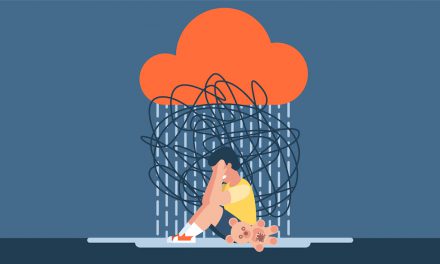Mental health in the workplace is a topic that has gained more and more attention in the last decade. According to the Centers for Disease Control and Prevention (CDC), more than 44 million adults, age 18 and up, in the United States reported suffering from some kind of mental illness. In the professional sphere, mental illness causes issues with performance, engagement, communication, and daily function. The CDC reports that mental illnesses are associated with higher rates of disability and unemployment. This isn’t surprising as conditions such as depression and anxiety interfere with a person’s ability to perform daily tasks, and induce physical ailments that include pain, nausea, and fatigue.
Depression and anxiety suppress mental clarity, and people with these conditions often experience brain fog and struggle with concentration. Other executive functions, such as planning, organization, memory, flexibility and decision-making, are also negatively impacted. Executive functioning is a set of mental skills that help people get things done. People with depression, bipolar disorder, anxiety, attention deficit disorder (ADHD), and more, struggle with these skills. Problems with executive functioning make it difficult to take in information, follow instructions, and complete tasks.
In some cases, an individual doesn’t enter a job with cognitive deficits, but the stress of the job weighs on them so heavily that mental health disruptions develop over time. Although it’s important for individuals to stay in tune with their mental health and know when something is wrong, it’s also up to workplaces to create an environment where employees feel safe and supported asking for help. According to the World Health Organization (WHO), depression and anxiety costs the United States $1 trillion per year in lost productivity. However, WHO also reports that for every dollar put into treatment for common mental disorders, there’s a return of $4 in better health and productivity.
Mental Health America (MHA) reports that those who work in the food, retail, or manufacturing industries have the highest instances of work-related stress. On the other hand, those who work in health care, financial services, or in nonprofit organizations reported the healthiest workplace wellness, according to a survey conducted by MHA. Workplace stress costs the company financially in lost productivity and it makes for an unhappy work environment overall.
People who are unhappy at work may not show up for their shifts, leaving the business short-staffed, or with strained interactions with coworkers and customers. Flexible schedules, opportunities for professional growth, and relaxed policies positively influence employee satisfaction and engagement. On the other hand, workplace disengagement and mismanagement results in general dissatisfaction among employees.
Improving workplace wellness doesn’t have to cost a lot of money. A simple improvement in management skills can make a world of difference. For example, acts of gratitude go a long way. It’s important that employees know that their work and their efforts are seen and appreciated (and that their pay reflects this appreciation). Acknowledging an employee’s successful contributions is not only a powerful motivator, it fosters higher workplace morale. It’s also important to remain open to employee suggestions, take their contributions and ideas seriously, and being willing to admit mistakes without shame or blame.
One-on-one performance reviews where employees are given constructive criticism, along with praise, allows them to know where they stand in the company, receive valuable feedback, and understand where room for improvement is needed. Clear tasks and objectives are imperative to workplace engagement and productivity. In jobs consisting of manual labor, such as manufacturing and warehouse jobs, it’s important that physical workplace safety is taken seriously, as physical wellness directly contributes to mental wellness.
Workplaces should also be supportive of people with existing mental health disorders. Discrimination based on health conditions is illegal, thanks to the Americans with Disabilities Act, and also fosters a toxic work environment. It’s also important to remain conscious of differing employee needs. Additionally, there should be resources to assist employees with existing mental health conditions, such as employee assistance programs (EAP).
There are several ways employees can look after their own mental health at work. The first step is recognizing when there might be a problem. Mental health problems and illness manifest themselves differently in each individual. While one depressed person might be sad and unmotivated, the other might be irritable and restless.
Some people with depression or anxiety sleep too much, while others suffer from insomnia. Mood swings and changes in appetite and weight are also signs of an imbalance. Those who are depressed and/or anxious might experience thoughts of self-harm, death, or suicide. If this is the case, it’s even more important to seek help as soon as possible.
Poor workplace conditions can also affect relationships at home and with friends – depressed people at work may argue with their partners, be ill-tempered with their children, or may isolate themselves socially. They may find themselves disinterested or unable to engage in hobbies and activities they once enjoyed, while being disinterested at work. A person may also find themselves indulging in alcohol, tobacco, or other substances more than before.
Everyone can contribute to workplace wellness. All it takes is initiative, the ability to recognize problems before they start, and healthy conflict resolution. Employees must also take responsibility for their own health, even if it means implementing mindfulness practices both on and off the clock. With everyone’s effort, it’s possible for the workplace to be a place of fulfillment rather than a source of stress and contention.








